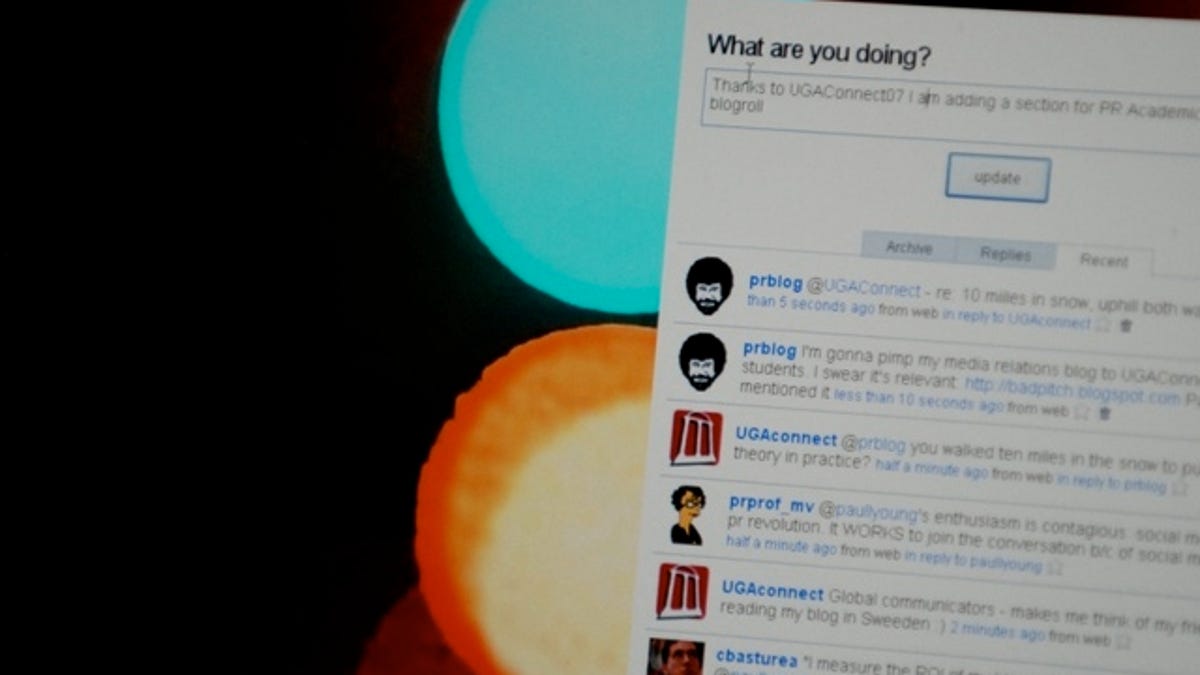Twitter chats and sponsored hashtags--how to do it right
Organized Twitter chats are a particularly effective vehicle to provide entry points for consumers to engage with companies around specific topics, events, or issues that are meaningful to them.
By Kristina Loring
With the Twittersphere reaching critical mass, lots of companies are establishing accounts to speak directly with customers, monitor their brand, and respond to questions and rumors. Most of them are using the microblogging service to become more transparent and as a trustworthy resource for their followers, while also exposing a more personable aspect of their brand.
Here are some examples, researched by Brilliant Ink, a communications agency specializing in strategic messaging and content development:
- Ford used Twitter to host conversations and answer criticisms during the recent federal loan hearings in DC: https://twitter.com/scottmonty. Scott Monty is Ford's social media manager and often uses Twitter to enable people to ask questions of Ford execs. Ford also held a chat featuring its CEO Alan Mulally at #FordCEO.
- Microsoft is partnering with Exectweets, a Twitter chat room of sorts for executives.
In addition, there are several companies that do a good job fostering customer service and engagement via Twitter and occasionally focus on a particular discussion topic:
- Dell: https://twitter.com/delloutlet
- HR Block: https://twitter.com/hrblock
- Comcast: https://twitter.com/comcastcares
- Zappos: https://twitter.com/zappos
- Marriott Hotels: https://twitter.com/MarriotIntl (the hotel chain used Twitter to communicate with customers in during the recent bombings in Mumbai)
How exactly one is supposed to use Twitter is still up for interpretation, but these companies seem to be doing it the right way, especially in contrast to those that have chosen to use their Twitter accounts as nothing more than a means of self-promotion (essentially using Twitter as an extension of their RSS feed). These companies most often find themselves broadcasting to an absent/vacant audience. A stark reminder was the recent controversy over Land Rover's use of social media in an ad campaign, and the fact that some Twitterers were paid to contribute, sparking discussions about the risks of "sponsored hashtags."
Organized Twitter chats are a particularly effective vehicle to provide entry points for consumers to engage with companies around specific topics, events, or issues that are meaningful to them. More and more companies are beginning to use these kinds of "hashtag conversations" (using the hash symbol (#) in front of a keyword is a familiar convention for Twitter users; it allows people to search for and follow specific conversations).
Brilliant Ink studied to what extent these conversations offer an opportunity for consumers to truly inform the company's priorities and perspectives around specific topics. One of the brands it examined was PepsiCo. At the end of April, the softdrink company began #PepTrends, an organized conversation around global trends. The moderator introduced a number of trend themes to the conversation, and the most popular topic turned out to be "social media and marketing." There were more than 1,400 individual tweets from the participants, and 171 people registered to take part in the chat. This was PepsiCo's first moderated hashtag conversation, following a very successful South by Southwest engagement where the company had used Twitter and blogs to interact with customers.
Another brand that has been able to amplify its voice through Twitter is Growing Bolder, an organization comprised of former journalists and other professionals interested in issues concerning those over the age of 50. The company hosts a chat tagged #ageop and describes the event as a "weekly informal think tank." It is facilitated by a guest host who asks questions to get the conversation going, but the discussion is fluid with participants introducing newsworthy issues of the week. Topics have ranged from President Obama's first 100 days in office to health care to prom memories. Participants also recently called on State Farm to join in a conversation about insurance -- which brings up an interesting dynamic. Will larger companies such as State Farm respond (or not) to activist- and issue-based groups like Growing Bolder? Indeed, can organized Twitter conversations online translate into offline social organization and action?
At frog design, we recently hosted a #froghealth Twitter chat on the subject of mobile health. Participants included our own health care experts, members of the press, and external health care professionals. Originally planned as an internal experiment to explore the use of Twitter, the chat turned into a discussion about a redefinition of health care and a restructuring of the health care system. External participants noted the event on their own accounts and joined in. One participant of the conversation called it "curated crowdsourcing." In the end, the Twitter chat provided a new way to have a frank discussion with our customers and with experts in the field about on-the-ground concerns.
If you want to host a moderated Twitter chat yourself, here are Brilliant Ink's General Guidelines:
- Determine the format (there are three options): 1. Create a free-flowing discussion where anyone can say anything germane to the topic; 2. Establish a structured agenda where the organizer asks questions and gives participants a set time to answer before moving on; 3. Feature a guest speaker, where s/he answers participants' questions and gives advice.
- Use the first 10 minutes for introductions.
- Don't allow pitching of participants' businesses until the final 10 minutes.
- Take banter or irrelevant chat offline ( remove the #) so as not to hijack the conversation.
- Use a specific account to represent the brand for the chat (@frogdesign) vs. a personal account.
- Never disparage or dismiss ideas or comments.
- Participants expect a 1:1 relationship, so the exchanges need to be conversational.
